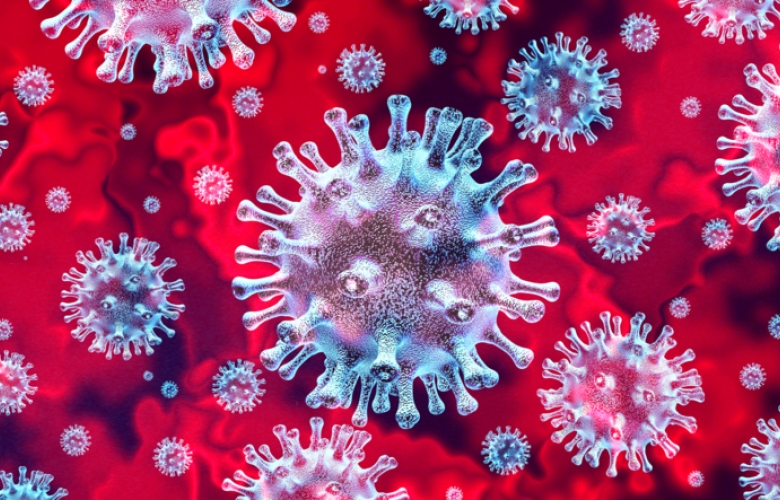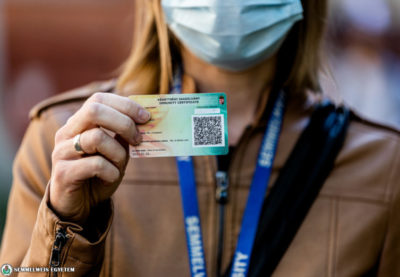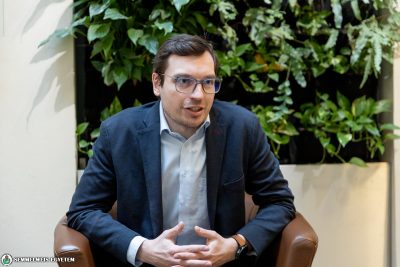At the online COVID forum organized by the Students’ Scientific Association (TDK), those interested had the opportunity to listen to presentations on the pandemic situation and about the research related to the coronavirus conducted at Semmelweis University. Dr. Béla Merkely, Rector described the role of the university in the fight against the coronavirus. Dr. Andrea Fekete, Associate Professor at the 1st Department of Pediatrics introduced her research results regarding fluvoxamine therapy for the treatment of complications caused by coronavirus.
In his opening speech, Dr. Attila Szijártó, President of the Students’ Scientific Association said that Semmelweis University had made a significant contribution to overcoming the coronavirus epidemic, and that science had not stopped within the institution during the pandemic.
“Research on the coronavirus infection is taking place in many places, and our own TDK students are conducting a significant number of related studies, therefore we considered it worthwhile to collect and present these research works together”, pointed out Dr. Attila Szijártó.
This was followed by Dr. Béla Merkely’s presentation “Semmelweis University in the Fight against the Coronavirus”.
Also as a cardiologist, I may say that we have recently conducted more and more research work on COVID-19 and published a number of publications, which is typical of other clinics and theoretical institutes as well. We always have to deal with the most exciting topic, because if we can show something new within a short amount of time, it may have a great impact and it may improve not only our own reputation, but also the university’s reputation and it may even bring fruitful innovative results in the long run
– the Rector highlighted. He pointed out that the university is among the best educational institutions in the world concerning a number of indicators: in THE University Impact Ranking 2021, for example, the institution is in the Top 10 in the Good Health and Well-Being category.
Dr. Béla Merkely drew attention to the fact that the university had always responded to the challenges of history, and as an example he mentioned the role of the institution during the Hungarian Revolution of 1848, the First World War or even the 1956 Revolution.
“A similar challenge was the outbreak of the pandemic last year, the case number of which was 30 million in the European Union and it caused the death of 713,000 people. The university soon became involved in the fight against the coronavirus, and as early as 11 March 2020, we were able to perform PCR tests, and on 21 March, a clinical epidemiology team was set up with the participation of four universities, led by Semmelweis University”, the rector said.
In terms of the overall case positivity, Dr. Béla Merkely emphasized that the proportion of positive tests was 3-4% in the first wave, 30% in the second wave, and 25% in the third wave. In connection with the vaccination activity of the university, he said that from 26 December 2020, the staff of Semmelweis University has been administering vaccines with all the vaccine types approved in Hungary. As far as the domestic epidemic situation is concerned, the rector highlighted several numbers: the moving average peak of confirmed COVID-19 cases was around 100 in the first wave, 5,800 in the second wave, and exceeded 9,000 in the third wave. The number of COVID-19 positive inpatients was 8,018 at the peak of the second wave and 12,438 at the peak of the third wave; the number of people on the ventilator was 669 at the peak of the second wave and 1,527 at the peak of the third wave.
“In the meantime, we constantly had to pay attention to the triple mission of Semmelweis University, that education, research, and health care should also function continuously in accordance with the epidemiological situation”, the rector pointed out.
Dr. Béla Merkely presented how the university transferred to a hybrid type of education. As regards the research and innovation conducted at the institution, he emphasized that research and development activities have been launched in a number of areas to combat the coronavirus, taking into account a multidisciplinary approach. As an example, he highlighted the following areas: pharmacology, immunology, nanomedicine, infectology, genetics, and clinical sciences such as cardiology and respiratory medicine. The rector also presented H-UNCOVER, the nationwide coronavirus screening program conducted in May 2020 with the participation of the four Hungarian medical universities, and he also shared examples of scientific collaborations and publications related to the coronavirus. He highlighted that the university has consistently ensured a high-level patient care and has been actively involved in the fight against COVID-19, explaining how the university has responded to the epidemic situation by rapidly procuring protective equipment or providing diagnostic and therapeutic procedures.
“The university used the most amount of remdesivir; the highest number of ECMO treatments was performed here; 6%, that is to say about 310,000 out of the more than 5 million 750,000 PCR tests performed in Hungary was carried out by students of Semmelweis University. Nearly 6,000 coronavirus-infected patients were treated at the university, and at the peak of the third wave, 720 patients were being hospitalized at the institution’s COVID units at the same time. In addition, the university was responsible for the medical and epidemiological insurance of 14 international sports events, including the 2020 Hungarian Grand Prix and the 2020 season of the International Swimming League, with the help of the so-called bubble model”, Dr. Béla Merkely highlighted.
Dr. Andrea Fekete, associate professor of the 1st Department of Pediatrics, co-founder and executive director of SigmaDrugs biotech, held a presentation “An Old Drug in a New Role: Fluvoxamine in the Treatment of Coronavirus Complications”. She pointed out that COVID-19 not only causes acute inflammation and respiratory complications, but can also cause pulmonary fibrosis as part of a post-COVID disease. She also talked about fibrotic diseases that affect many organs and cause 45% of all-cause mortality worldwide. The translational research team led by Dr. Andrea Fekete examines the development of fibrosis focusing primarily on the eyes, lungs, and kidneys. Their studies have shown that the activation of the Sigma-1 receptor may reduce the possibility of this. Based on their research findings, they realized that the Sigma-1 receptor may be activated by an antidepressant called fluvoxamine. Their studies have been published and their research results were patented. According to their studies, the Sigma-1 receptor agonist fluvoxamine may reduce SARS-CoV-2 pneumonia and fibrosis. Dr. Andrea Fekete also presented the course of the research and the international publications on the topic. A phase 2 clinical trial could begin in November 2020, with the primary endpoint being acute clinical improvement and the secondary endpoint being the development of pulmonary fibrosis.
In the following part of the event, students presented their research works related to the coronavirus. In connection with his work carried out at the 1st Department of Surgery and Interventional Gastroenterology, Miklós Domonkos Sárközi spoke about the information methods of people with inflammatory bowel diseases during the first wave of the COVID-19 pandemic in Hungary. Dávid Süvegh, who is working on his TDK work at the Department of Traumatology, held a presentation on the impact of the SARS-CoV-2 pandemic in connection with the changes of the number of neurotraumatological cases. Fanni Meznerics, who is conducting her research at the Department of Dermatology, Venereology and Dermatooncology, focused on the widespread use of teledermatology during the first wave of the COVID-19 epidemic, as well as the new opportunities offered by oncodermatology prevention. Adrienn Vatamány-Einbeck writes her TDK work at the 1st Department of Pediatrics about the effect of the first wave of the coronavirus epidemic on the metabolic balance of children with type 1 diabetes. Emese Csenge Fogarasi, a TDK student of the Heart and Vascular Center, held a presentation “Study of the Myocardial Involvement of a Previous SARS-CoV-2 Infection by Cardiac Magnetic Resonance Imaging among Elite Athletes”. Laura Bokor is also conducting research at the Heart and Vascular Center, focusing on the secondary effects and consequences of the first wave of the pandemic in the treatment of myocardial infarction. The topic of the TDK work of Borisz Rabán Petrik at the Department of Internal Medicine and Hematology is the role of favipiravir in the treatment of adult patients with moderate to severe COVID-19 infection. Zsófia Gáspár is conducting research at the South-Pest Hospital Center, her presentation was about the experience of using tocilizumab in cytokine storm syndrome associated with SARS-CoV-2 virus infection.
Ádám Szabó
Photo: Attila Kovács – Semmelweis University
Translation: Katalin Illés-Romhányi




